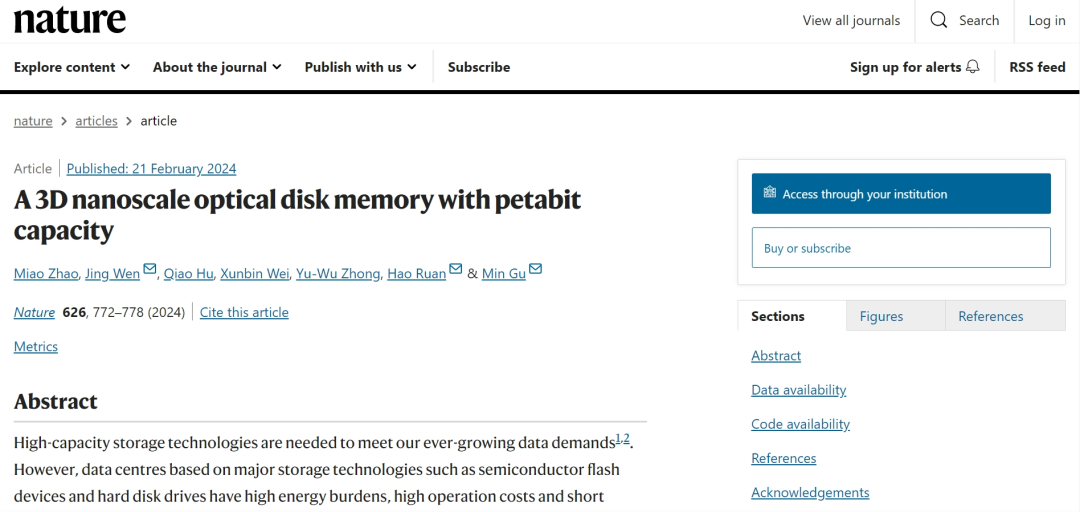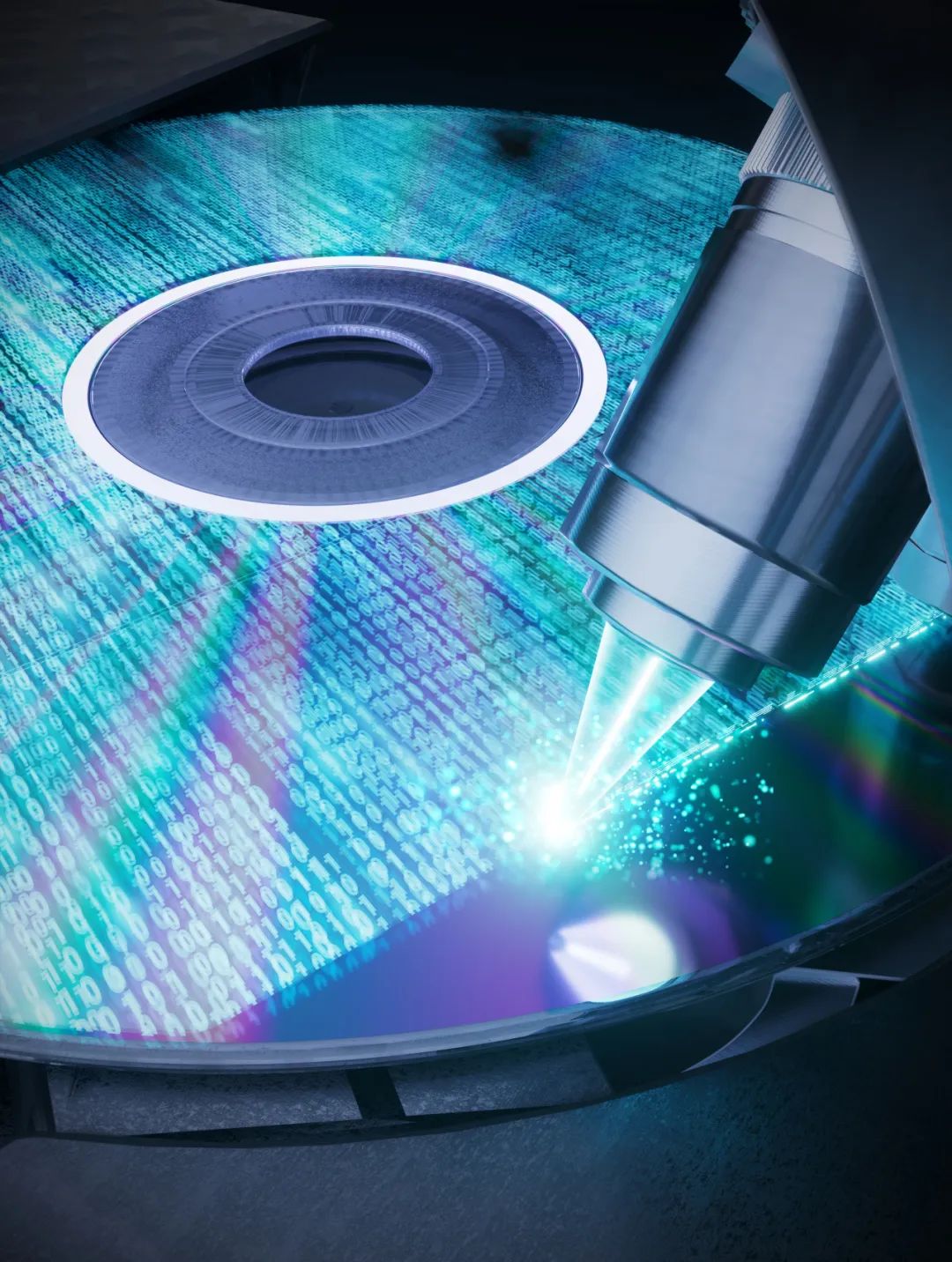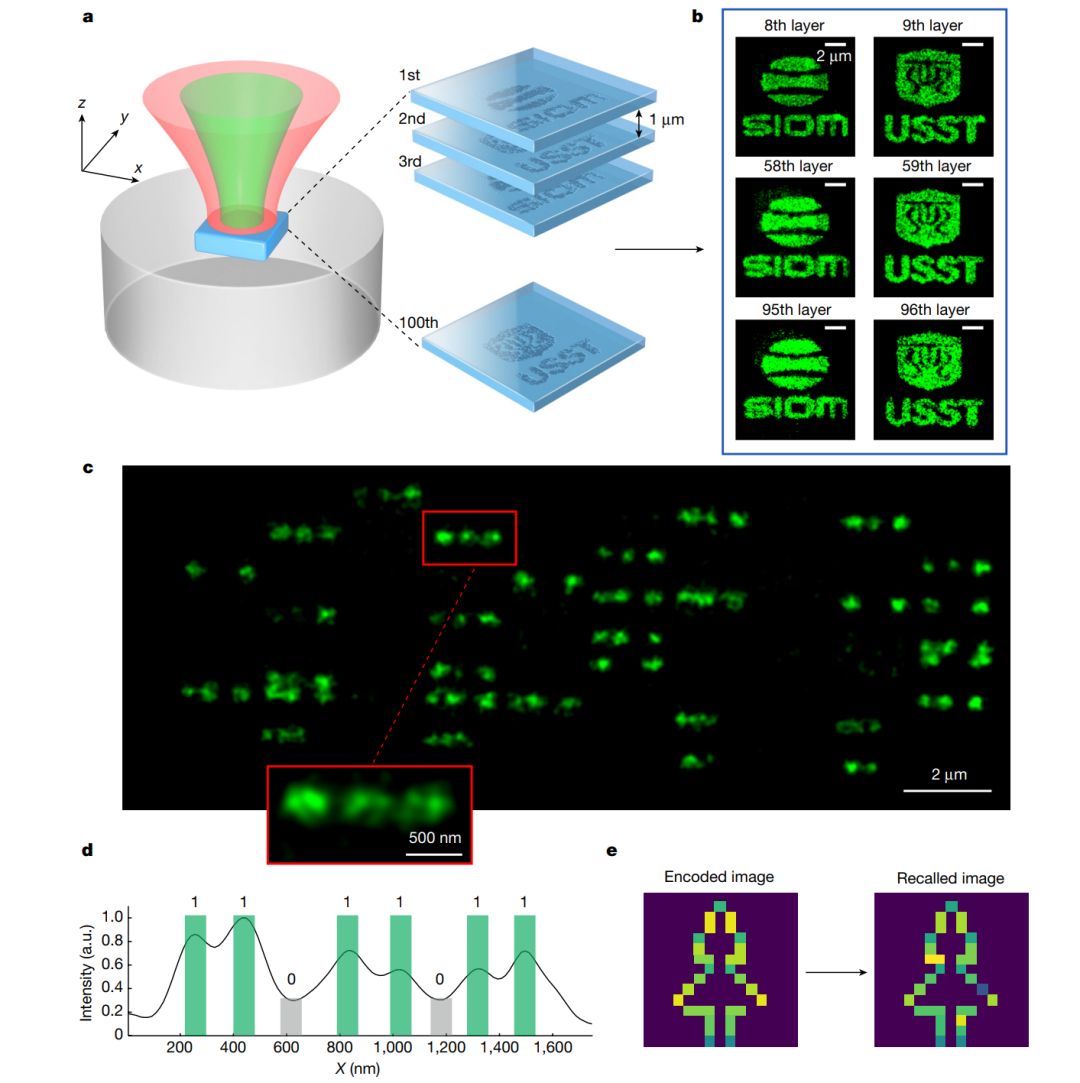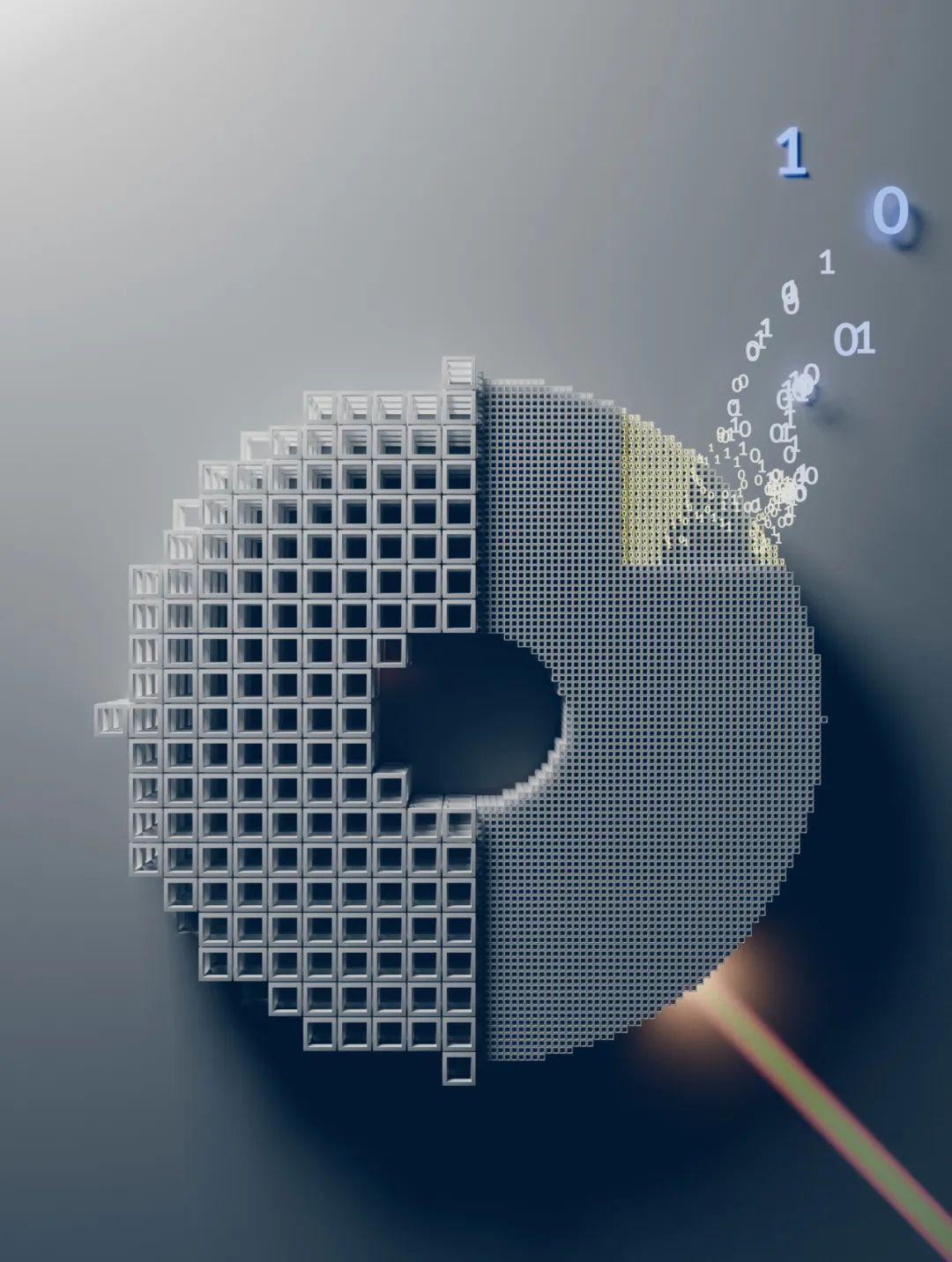
Open a new era of green massive photon storage!The latest achievements of Shanghai Science and Technology are published in the official issue of "Nature"
 2024.02.23
2024.02.23 
“After taking a few photos, my phone's memory was full again."My computer hard drive is full, and I have to buy an external hard drive again."... Behind these habitual "troubles" are people's increasingly high data storage needs.These daily "little troubles" are just the tip of the iceberg of data storage troubles - according to a white paper issued by a professional data storage organization, the total global data volume by 2025 will be from 33 in 2018 ZB Increased to 175 ZB(ZB That is, "Ze byte", 1 ZB Equal to 1 billion TB, terabytes), if you use the most mainstream 1 TB At least 175 billion are required to install these data in a capacity of mobile hard disks.This is not only expensive, but also has a short lifespan of data storage.Therefore, whether it is personal daily needs or industrial and agricultural production, it is already urgent to develop storage technologies that can accommodate massive data and be green and secure.

recently,The team members of Shanghai University of Technology and the Shanghai Institute of Optical Precision Machinery, led by Academician Gu Min, used optical storage technology to propose green, long-life, big data storage solutions, and the research results were " Pb Capacity three-dimensional nanophoton storage” (A 3D nanoscale optical disk memory with petabit capacity)As the title, published in Nature ( Nature) In the official issue。Researchers use dual-beam technology to break through the limit of optical diffraction limits, and for the first time it is confirmed that it can be used to write and read information points at super-resolved sizes in three-dimensional space, and the capacity of a single disk can be as high as that of Pb Level, equivalent to the capacity of at least 10,000 Blu-ray discs.That is to say, driven by this technology, the world's annual data needs to be saved Pb The number of grade optical disks can be reduced by two orders of magnitude compared to hard disks, achieving the effect of "one to one hundred".
Academician Gu Min, Dean of the Photonic Chip Research Institute of Shanghai University of Technology and Director of the Institute of Optical Computing in Zhangjiang Laboratory, Professor Wen Jing of Shanghai University of Technology, and Researcher Ruan Hao of Shanghai Institute of Optical Precision Mechanics is the corresponding author.Postdoctoral fellow Zhao Miao and Professor Wen Jing of Shanghai Institute of Optoelectronics, Chinese Academy of Sciences are the first authors of this achievement.

Image quoted from "Nature" ( Nature) of" Pb Capacity three-dimensional nanophoton storage” (A 3D nanoscale optical disk memory with petabit capacity)paper
According to Academician Gu Min, Pb Level massive three-dimensional nanophoton storage technology is an epoch-making technology.Deep learning model GPT For example, the data set behind it, such as the total number of indexed web pages, is as high as 5.8 billion, and the text size of the entire Internet is about 56. Pb, If you still use 1 TB The capacity of mobile hard disk stores this data, which is spread out to be equivalent to the area of a standard track and field field.The three-dimensional nanophoton storage developed by the scientific research team this time can save storage space to the size of a computer, greatly reducing economic costs.
In addition, in order to maintain the strict operating environment of the database (such as constant temperature, humidity, anti-magnetic and dustproof) requires huge energy consumption. Taking 2022 as an example, the total power consumption of my country's data centers is about 270 billion kilowatt-hours, exceeding the annual power generation of two Sanxia hydropower stations.What is particularly troublesome is that data migration is required every 3 to 10 years, which poses a risk of data being tampered with or lost, and has a short storage life.The photon storage technology developed by the scientific research team this time can reduce energy consumption by orders of magnitude and its lifespan can reach 50 to 100 years.

The proposal of this disruptive result stems from the team's breakthrough of the limit of optical diffraction limits - such as laser directwriters, optical microscopy technology, and optical storage technology, all of which are limited by optical diffraction limits."Of the 125 most cutting-edge scientific issues in the world released by Science in 2021, optical diffraction limit ranks first in the field of physics, and is also one of the seven technical fields that will be paid attention to in the next year after the latest release of Nature in 2024.It can be said that our team has been competing with the 'mountain of Everest' in this field.”

A breakthrough in the field of basic research is by no means a day's work. As early as 2013, Academician Gu Min led the team to start innovative exploration.In the field of laser direct writing, he led the scientific research team to use the principle of dual beam to realize 9-nanometer laser direct writing technology.The proposal of nanophoton storage technology published in Nature magazine not only successfully breaks through the physical problem of optical diffraction limit in the field of optical storage, but also helps my country achieve breakthroughs in the field of storage, but will also show its skills in aerospace, biomedicine, satellite communications and other fields.
Related paper information
https://doi.org/10.1038/s41586-023-06980-y
https://www.nature.com/articles/s41586-023-06980-y
Reprinted from: Shanghai University of Technology
Address: No. 128, Xiangyin Road, Yangpu District, Shanghai
Zip Code: 200433
-
dynamic
-
base
-
service
-
service center
-
about Us
-
Contact Us






